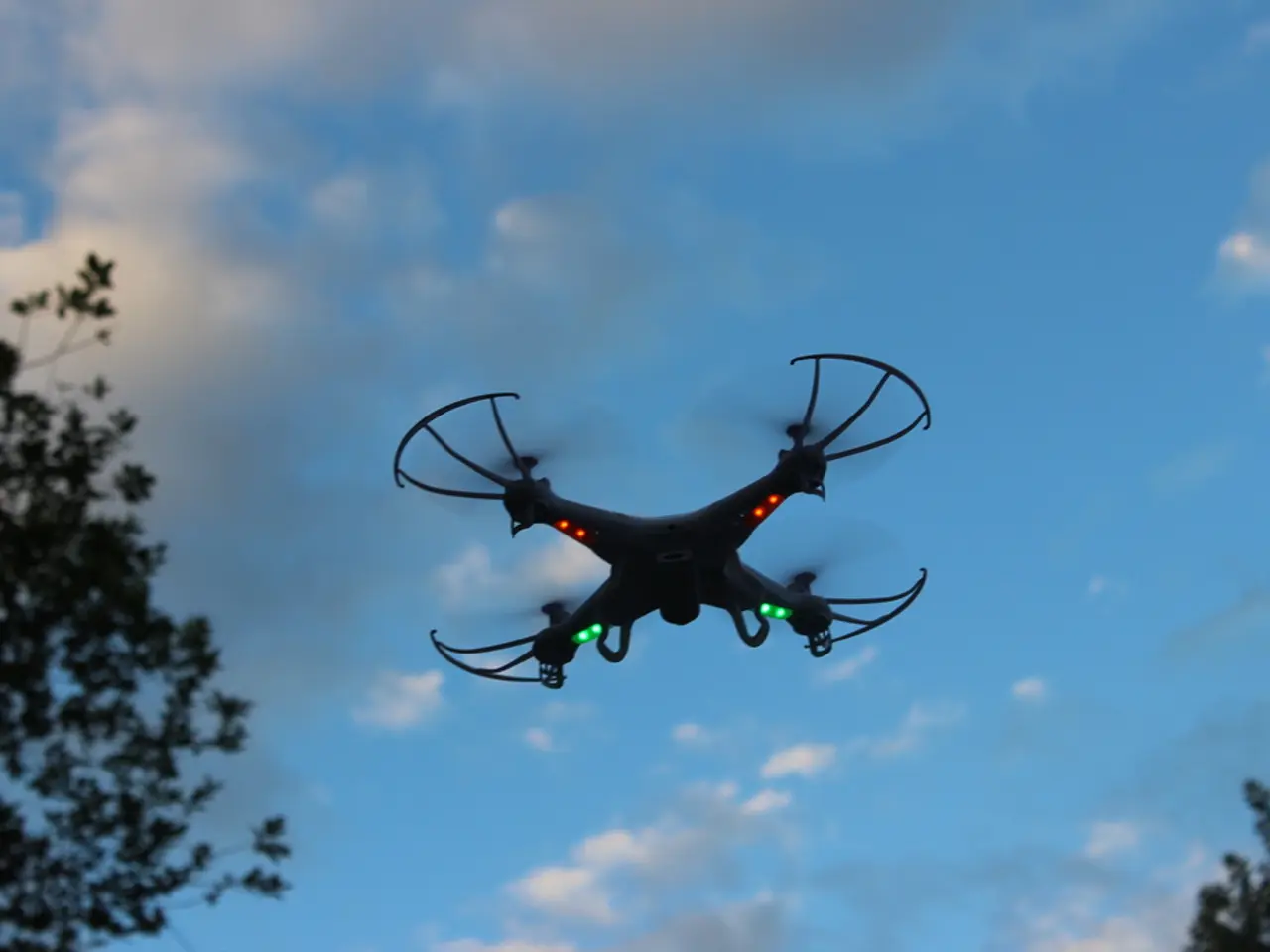Strategies for Safely Disabling a Drone: Key Steps to Ensure Compliance with Laws
In the rapidly evolving world of drone technology, understanding and complying with regulations has become crucial. As we approach 2025, the Federal Aviation Administration (FAA) has set forth a series of guidelines to ensure the safe and responsible use of drones.
One of the key requirements is the broadcasting of a Remote ID signal for most drones that require registration. This feature enables authorities to identify and locate drones that may pose safety or privacy threats. Drones weighing less than 0.55 pounds and used exclusively for recreation are exempt from these requirements, as are drones flown in FAA-Recognized Identification Areas (FRIAs).
When it comes to addressing privacy concerns, states like California and New York have implemented drone-specific privacy laws that prohibit the use of facial recognition and audio capture without consent. These laws aim to address privacy issues beyond the FAA regulations.
In case of drones violating restricted airspace, such as Temporary Flight Restrictions (TFRs) established for public safety, law enforcement agencies have the legal authority to engage with the drone operator to mitigate threats. However, it's important to note that TFRs do not physically stop drones from flying in restricted zones. Reporting such incidents generally involves contacting local law enforcement or FAA authorities who can respond based on the Remote ID data and applicable state privacy laws.
As we move forward, private property owners will gain stronger legal tools to deal with intrusive drones. By 2025, new GPS tracking gadgets and approved signal-blocking devices will be available. Geofencing software, which sets virtual boundaries that block drones from entering specific zones, is also being utilised in some locations to keep drones away from sensitive areas.
Before acting on any drone issues, it's essential to talk with a local aviation safety expert or an attorney. If you spot a suspicious drone, taking photos, recording clear videos, and noting the exact date and time can help in reporting the incident. In such cases, it's best to call your local police first, as they are quicker in responding than federal authorities.
It's important to remember that damaging or destroying a drone is considered a federal crime under FAA rules, which could earn up to 20 years in prison. Drones, even small recreational models flying in Class G airspace below 400 feet, fall under protected aircraft regulations.
Several tech firms are developing easy-to-use drone detectors that comply closely with air carrier laws. The FAA expects drone pilots to closely follow set guidelines regarding where and how their devices fly within the national airspace system. Many drone manufacturers already install geofencing technology directly into their products.
The FAA controls every aspect of drone flights within U.S. airspace. State and local drone laws go hand-in-hand with federal regulations, but they can't overrule FAA control of airspace. Drone flights near airports, stadiums, or private properties may violate federal aviation administration (FAA) rules. Certain cities even ask drone operators to obtain special permits or follow stricter rules than federal laws require.
By 2025, drones must carry Remote ID technology that acts like digital license plates, making it simple to spot unidentified drones around your home. This will empower homeowners to take legal measures to protect their privacy and property. The FAA Modernization and Reform Act defines conditions allowing the use of protective methods like geofencing and signal jammers.
In conclusion, the legal framework requires drone identification through Remote ID, respects privacy via state laws limiting surveillance technologies, and empowers law enforcement to address safety threats, with reporting mechanisms centered around these regulations and enforcement agencies. Before buying any drone-jamming equipment, always confirm local flight restrictions and read relevant FAA advisory circulars closely.
- As the FAA moves towards 2025, a significant shift in technology is anticipated, with drones being required to broadcast a Remote ID signal to allow identification and location.
- In the realm of data-and-cloud-computing, states like California and New York have enacted drone-specific privacy laws, prohibiting the use of facial recognition and audio capture without consent.
- In the crime-and-justice sector, damaging or destroying a drone, even a small recreational model, is considered a federal crime under FAA rules, punishable by up to 20 years in prison.
- In the general-news category, several tech firms are developing drone detectors that follow air carrier laws closely, and the FAA Modernization and Reform Act defines conditions for the use of protective methods like geofencing and signal jammers.




